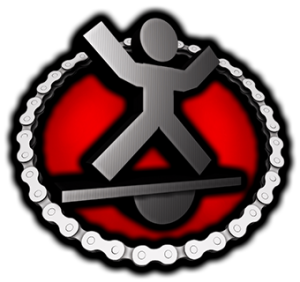
ACL rehabilitation takes work. The initial injury usually happens when you’re doing something you love. Then, you’re kept away from that activity for a long time; the surgery is challenging, the ice machine is uncomfortable, it is a long road to recovery, but the work pays off.
What are the chances of returning to sport after ACL surgery?
All of this is capped off by the fact that casual athletes’ return to sport rate is alarmingly low. I’m not sure most healthcare providers adequately prepare their patients for this fact. Only 55% of patients after first-time ACL reconstruction return to a competitive level of the sport (1). Those with ACL revisions (individuals who tore the surgical graft, requiring a second surgery) returned to the same competitive level of sport 40% of the time (2).
Fifty-five percent of anything is only slightly better than a coin toss. What if I told you, a hypothetical ACL surgical recipient, that your likelihood of playing soccer again depends on Shaq’s ability to hit his next free throw? Yeah. Not good. His career average was 52.7%.
The good news is there is a way you can significantly increase those odds – by following an ACL rehabilitation routine with a qualified physiotherapist. There is a great deal of research regarding ACL reconstruction and what it takes to return to sport or pre-injury activity level. At Trailside Physio, we excel at working together with our patients to ensure they achieve their goals after this type of injury.
What are the 3 main objectives in ACL rehabilitation?
- Restore Muscular Strength: Muscles on the operated side must achieve 90% of the non-operated side.
- Complete Single-Leg Jump Tests: perform a myriad of single-leg jumping tests: lateral, forward, and vertical.
- Achieve Return-to-sport Readiness: Complete the Return-to-sport readiness outcome measure.
1. Restore Muscular Strength
This basically means you must get strong, really strong. Most of the athletes we see here at Trailside Physio end up stronger than before their injury. ACL rehabilitation must include exercises that improve the strength of the glute, hamstring, calf, and quadriceps. The most important muscles to work on here being the quadriceps. These muscles work to straighten your knee, whether to kick a ball forward or, more importantly, stop your knee from bending or twisting incessantly when you plant your foot on the ground. Without strong quadriceps, the ACL is left to defend those joint movements independently. While that’s part of the reason it exists, this momentary overload causes it to tear (3). We aim for 90% symmetry, which means if you can kick 100 lbs. worth of force from your knee on your unoperated side, you better show us you can kick 90 lbs. on your operated one. This must be measured.
2. Single-leg Jumping Tests
These tests are important, albeit the clinical community has come around on them over the past few years. They show the confidence of the patient. They show the confidence of the physio. There is some debate on these tests in the research. The compensations can run rampant – a weak knee can still achieve a symmetrical hop if the athlete is good at compensating (most humans are). We know the eye test is not always perfect (4). Nevertheless, it’s a good idea to do some jumping tests to get an idea of where you feel, as a patient, you are in your rehab progress. Nothing feels better than knowing you’re getting closer to your end goals. Here, we aim for 90% symmetry as well. This must be measured.
3. Return-to-sport Readiness Scale
This is a readiness scale that helps us quantify how the athlete feels about various aspects of their life regarding their knee. How does the knee feel with day-to-day activities? How confident are they that they won’t injure their knee again? How ready do they feel to participate? How nervous are they? These are important talking points that sometimes are overlooked in the clinician-patient interaction.(5)
In Conclusion
Returning to sports after ACL surgery is hard, but very possible. It takes months of grueling rehabilitation, and lots of practice to feel confident in your knee again. Having personally been through ACL rehabilitation before, I can empathize with the athletes that I work with as a physiotherapist. Arguably, the return to sport rate after ACL reconstruction would be much higher if all therapists working in sports rehabilitation had the above three goals in mind. As a patient, make sure you take the initiative to ask your physiotherapist if this is something they know about. Above all else, therapists should be testing your strength. Again, the eye test and hand-held resistance are not enough (6).
There are many different paths to get to the endpoint with ACL rehab, but I do believe efficiency should be a priority. Stay tuned for part two of our blog series on ACL rehabilitation when we discuss muscle testing and my favorite ways to get the quadriceps working!
Book your ACL rehabilitation
with Trailside Physio today!
Written by:
Wesley Wai
Physical Therapist
Trailside Physio – Coquitlam
- https://bjsm.bmj.com/content/48/21/1543.long
- https://pubmed.ncbi.nlm.nih.gov/36189337/
- https://www.ncbi.nlm.nih.gov/pmc/articles/PMC4758854/
- https://www.ncbi.nlm.nih.gov/pmc/articles/PMC4758854/
- https://pubmed.ncbi.nlm.nih.gov/31205965/
- https://www.sciencedirect.com/science/article/pii/S2666061X21002194#bib19
